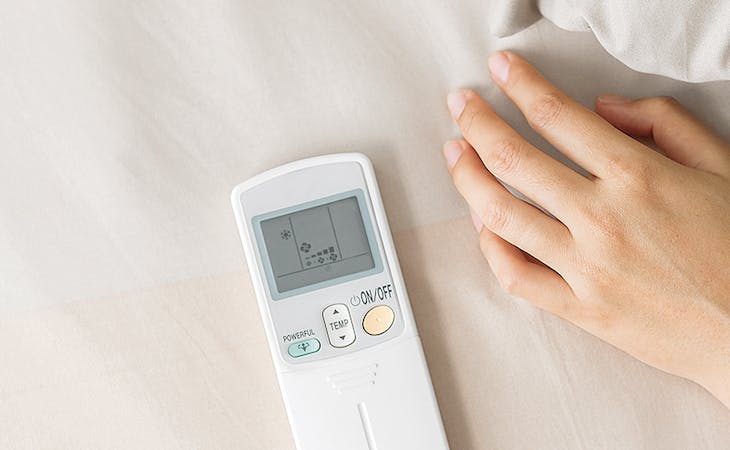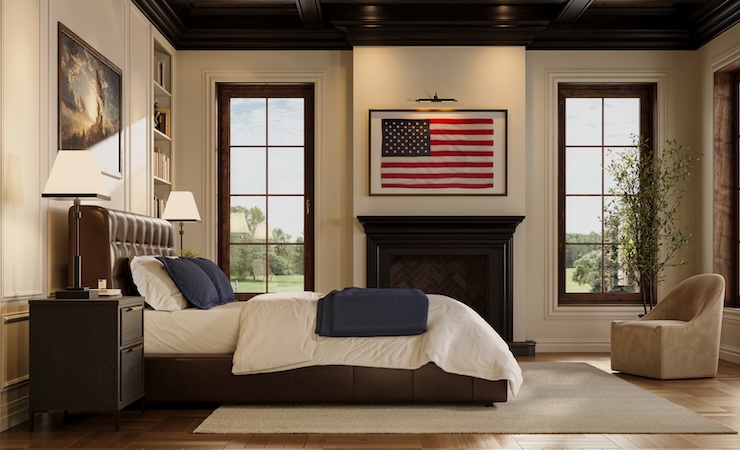Anyone who’s spent a night shivering under a too-thin blanket or sweating in an oppressively warm room knows: Getting temperature right is key to a great night’s rest. This finickiness isn’t just about comfort—it’s basic sleep science. An initial drop in body temperature signals the onset of sleep and helps you feel drowsy. As the night goes on, getting either too hot or too cold can interrupt REM sleep and brain-refreshing slow-wave slumber. In fact, research shows temperature is one of the most important variables in how solid and restorative your sleep is.
How you set your thermostat is part of the equation (the National Sleep Foundation recommends 60 to 67 degrees Fahrenheit), as is whether or not you have a partner adding body heat to the mix. But one of the most critical variables is the surface you’re sleeping on.
“You’re more likely to sleep warm on a foam mattress, even when compared to a hybrid innerspring, which we define as a combination of foam layers over metal springs,” according to Chris Regan, chief mattresses tester for Consumer Reports. “Sleeping hot” has long been one of the chief concerns about memory foam. By design, memory foam responds to temperature, softening as it warms and molding to the sleeper’s unique curves. That distinctive contouring ability is what many people love about memory foam, but it can also trap and retain heat close to the body.
What to do if your mattress sleeps hot
Whether your mattress sleeps hot or cool depends on the specific materials, how it’s constructed, and even the base or foundation it sits on. If you’re concerned about “sleeping hot,” here are some things to keep in mind.
The best ways to sleep cool
For the coolest night’s sleep, focus on choosing breathable bedding and taking steps to boost airflow in and around your bed.
- Opt for an innerspring or “hybrid” mattress. Mattress materials and construction are absolutely key to sleeping cooler, says Derek Lakin, a researcher and product expert at consumer-review site HighYa. In general, the denser a material, the more heat it retains. That means tight-structured materials like foam are warmer, and looser natural fibers like wool and cotton are cooler. Hybrid innerspring mattresses strategically layer foam, fabric padding, and coils to promote easy air flow, making the whole mattress more breathable.
- Look for memory foam with cooling features. As a category, foam traps more heat than less dense materials, but some foams sleep cooler than others. In general, traditional viscoelastic memory foam sleeps the warmest, latex sleeps coolest, and polyurethane is somewhere in between. The good news is, newer generations of memory foam, such as those made with plant-based ingredients, retain less heat than older ones. The addition of cooling gel layers and breathable fabric covers helps too.
- Add a mattress pad. If your current mattress sleeps hot, cover it with a thin wool topper to dissipate heat and wick away sweat and moisture. Some experts also say pads containing “phase-changing” gel can help with heat transfer.
- Use a box spring or platform with open slats. The more air can circulate in and around the bed, the cooler you’ll be, says Lakin. Changing from a solid platform (or the floor) to a slatted base or box spring will promote airflow. One important caveat: Some warranties, particularly those for latex mattresses, require minimum spacing between slats in a slatted foundation, so be sure to check yours before making a change.
- Try new sheets. A good solution if your mattress sleeps hot is to complement it with breathable sheets made from natural materials like bamboo and cotton to promote airflow and cool things down. (Shameless product plug: Cool, comfortable sleep is one big reason why Saatva introduced a line of cotton sheets and pillows just in time for summer.
When you run hot and your partner runs cold
Having said all that, we know that lots of people share a bed with a partner who runs on a completely different body thermostat. Some people naturally run hotter than others—and everyone’s “just right” sleep temp is different. Here are some ways to find a happy medium if you and your bedmate run hot and cold.
- Consider a latex mattress. Some sleepers, such as people with arthritis or those who sleep on their side, can benefit from the cushioning and pressure relief of memory foam. That can be a bummer for a bedmate who gets too hot at night. One solution: a latex mattress. Latex incorporates some of the best qualities of foam and innerspring: It has the contouring ability of foam, but its open-cell structure allows for plenty of cooling air flow. Plus, because latex is a natural material, made from the sap of the rubber tree, it is hypoallergenic, renewable, and free of harmful chemicals. (For a closer look latex mattresses are made, check out How to Pick the Perfect Latex Mattress.)
- Get new pajamas. PJs made from tightly woven materials like flannel and polyester will keep the chilly bedmate warm, while thinner, natural materials like cotton and bamboo with cool down the hotter one. “Wicking” pajamas can help sweaty sleepers stay more comfortable, too, according to tests by the Good Housekeeping Institute.
- Opt for separate covers. One of the simplest ways to deal with temperature differences is separate covers or dual-control electric blankets that allow each partner to choose the setting that’s most comfortable.
FAQs
Why do mattresses get hot at night?
Mattresses, such as memory foam, respond to temperature and trap and retain heat close to the body due to the dense materials in their layers.
How do I keep my mattress cool at night?
Simple ways to keep your mattress cool at night include opting for a hybrid mattress (which promotes airflow and is more breathable), adding a mattress pad, using a box spring or platform with open slats, and trying new, breathable sheets.








